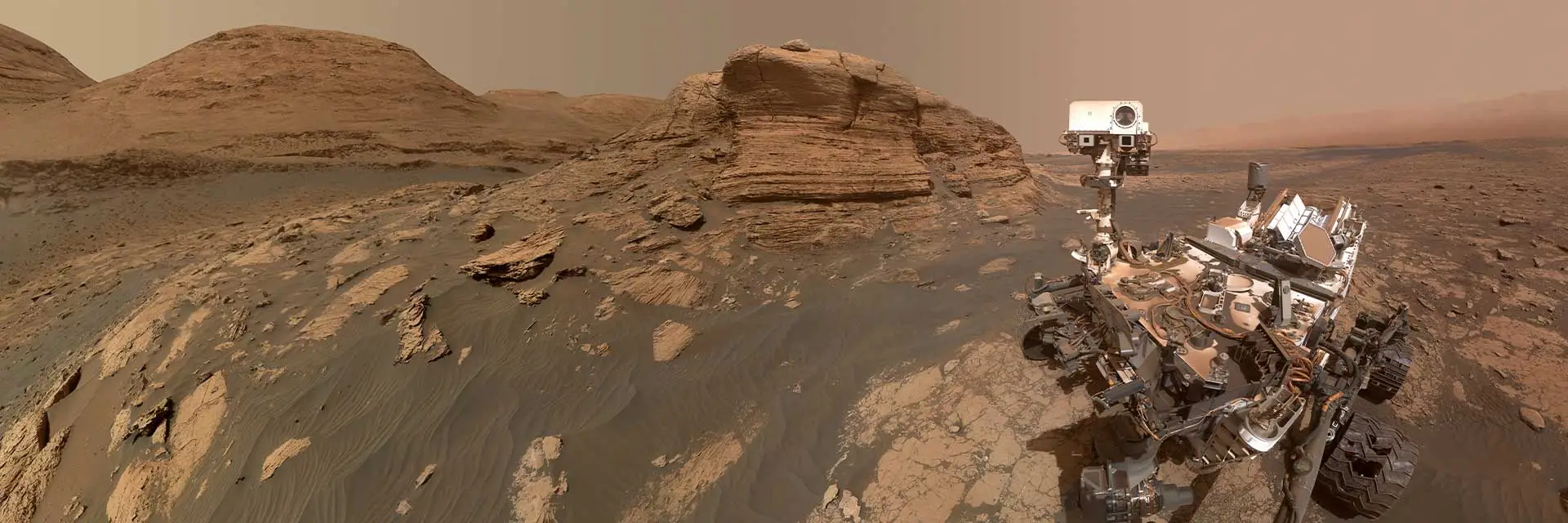As of July 2024, scientists have not yet discovered definitive proof of microbial life on Mars. However, multiple missions—including NASA’s Perseverance rover, the European Space Agency’s (ESA) ExoMars program, and China’s Tianwen-1 orbiter and Zhurong rover—have uncovered compelling evidence suggesting that Mars may have once been habitable, or could even still host microbial life deep beneath its surface. Over the past few years, key discoveries related to organic molecules, methane fluctuations, potential underground brine lakes, and fossil-like structures have reignited debates about the possibility of life on the Red Planet. While no single finding confirms the existence of Martian microbes, the cumulative data paints an intriguing picture that future missions may soon clarify.
Organic Molecules and the Potential for Ancient Life
One of the most significant recent discoveries came from NASA’s Perseverance rover, which has been exploring Jezero Crater—a site believed to have once been a vast lake—since February 2021. On February 16, 2024, NASA’s Jet Propulsion Laboratory (JPL) announced that Perseverance had detected complex organic molecules in Martian rock samples. These compounds, including aromatic hydrocarbons and sulfur-containing organics, are not direct evidence of life but are considered essential building blocks for microbial organisms. Scientists speculate that if life ever existed on Mars, these molecules could have been part of its biochemistry.
Dr. Sunanda Sharma, a NASA JPL scientist working on the mission, stated: “This doesn’t mean we’ve found life, but it means the ingredients for life were there.” The discovery is particularly exciting because Jezero Crater’s ancient lakebed environment resembles regions on Earth where microbial life thrives. Perseverance has been collecting rock samples for the upcoming Mars Sample Return (MSR) mission, which aims to bring these materials back to Earth in the 2030s for more detailed analysis. If microbial life once existed on Mars, these samples could contain fossilized remnants or biochemical signatures.
The Methane Mystery: Geological or Biological?
Another major puzzle in the search for Martian life is the detection of methane gas in the planet’s atmosphere. On Earth, most methane is produced by living organisms, making its presence on Mars a potential biosignature. However, the evidence has been inconsistent.
On September 12, 2023, NASA’s Curiosity rover reported spikes in methane levels inside Gale Crater. These fluctuations were intriguing because they followed seasonal patterns, similar to how microbial activity on Earth influences methane emissions. However, ESA’s Trace Gas Orbiter (TGO), which has been monitoring Mars’ atmosphere since 2016, did not confirm these methane detections at higher altitudes. This discrepancy has led to two competing theories:
-
Biological Explanation: Methane could be produced by subsurface microbes, similar to methanogenic bacteria on Earth.
-
Geological Explanation: Methane might be released through reactions between water and certain rocks, or from underground reservoirs where it has been trapped for millions of years.
A study published in May 2024 in Nature Astronomy suggested that methane could be stored in underground pockets and released in bursts due to geological activity. Until more data is gathered, the debate remains unresolved. Future missions, such as ESA’s Rosalind Franklin rover (set to launch in 2028), will carry advanced instruments designed to detect organic compounds and methane with greater precision.
Underground Brine Lakes: A Refuge for Extant Life?
One of the most tantalizing recent discoveries is the potential existence of liquid water beneath Mars’ south polar ice cap. On March 8, 2024, a study published in Science Advances analyzed radar data from ESA’s Mars Express orbiter and found evidence of subsurface brine reservoirs. These liquid pockets, kept from freezing by high salt content, could theoretically support microbial life.
This finding is reminiscent of Earth’s subglacial lakes, such as Lake Vostok in Antarctica, where extremophile bacteria thrive despite extreme conditions. If similar environments exist on Mars, they could serve as refuges for microbial life, shielded from the planet’s harsh surface radiation and freezing temperatures. However, confirming these brine pockets will require further exploration, possibly with future landers equipped with deep-drilling capabilities.
Strange Rock Formations: Fossilized Microbial Mats?
In July 2023, Perseverance captured images of tiny, filament-like structures embedded in Martian rocks. Some astrobiologists noted that these formations resemble microbial mats—layers of bacteria and sediment found in Earth’s ancient fossil records. While intriguing, the scientific community remains divided:
-
Pro-Life Argument: The structures could be remnants of microbial colonies that once thrived in Jezero Crater’s lake.
-
Abiotic Explanation: They might simply be mineral formations created by chemical processes, with no biological origin.
The only way to settle this debate is through direct sample analysis, which is why the Mars Sample Return mission is so crucial. If these rocks contain microfossils or biochemical traces, they could provide the first definitive evidence of past life on Mars.
Revisiting the Viking Lander Experiments (2024 Reanalysis)
One of the earliest attempts to detect life on Mars was NASA’s Viking landers in 1976. The Labeled Release Experiment (LRE) initially returned positive results for metabolic activity, but most scientists later dismissed them as chemical reactions caused by perchlorates (reactive salts in Martian soil). However, in January 2024, a study in the Astrobiology Journal re-examined the Viking data and argued that the results could still be consistent with microbial activity.
This new analysis suggests that Martian microbes, if they exist, might have a different biochemistry than Earth life, making them harder to detect with conventional tests. While this theory remains controversial, it underscores the need for more advanced instruments in future missions.
Why Haven’t We Found Definitive Proof Yet?
Despite these exciting discoveries, several challenges remain in confirming microbial life on Mars:
-
Detection Limits: Current instruments on rovers and orbiters can detect organic molecules but cannot definitively distinguish between biological and non-biological sources.
-
Sample Return Needed: Many key findings (such as potential microfossils) require laboratory analysis on Earth, which is why the Mars Sample Return mission is critical.
-
Extreme Conditions: If microbial life still exists on Mars, it is likely deep underground or in isolated brine pockets, making it difficult to reach with current technology.
Future Missions That Could Find Microbial Life
Several upcoming missions could provide the breakthrough evidence scientists are seeking:
-
Mars Sample Return (NASA/ESA, late 2020s–2030s): This ambitious mission will bring Martian rocks to Earth for in-depth study.
-
ExoMars Rosalind Franklin Rover (ESA, 2028): Equipped with a 2-meter drill, it will search for organic molecules beneath Mars’ radiation-exposed surface.
-
Tianwen-3 (China, 2030): China’s planned sample return mission could provide additional data from different Martian regions.
Are We Close to Finding Life on Mars?
As of mid-2024, the search for microbial life on Mars remains inconclusive but highly promising. The discovery of organic molecules, seasonal methane, potential brine lakes, and fossil-like structures all point to a planet that was once—and may still be—capable of supporting life. The next decade, with sample return missions and advanced drilling technology, could finally provide the definitive answer humanity has sought for centuries.
If microbial life is confirmed, it would revolutionize our understanding of biology and the potential for life beyond Earth. Even if no life is found, the data gathered will deepen our knowledge of Mars’ geological and climatic history, helping pave the way for future human exploration. For now, the hunt continues—and each new discovery brings us one step closer to solving one of science’s greatest mysteries.




